Sasaki Selected to Design Lake Monona’s Waterfront in Competition
Sasaki’s winning design will create an accessible, activated waterfront and establish a protected shoreline for wildlife to flourish
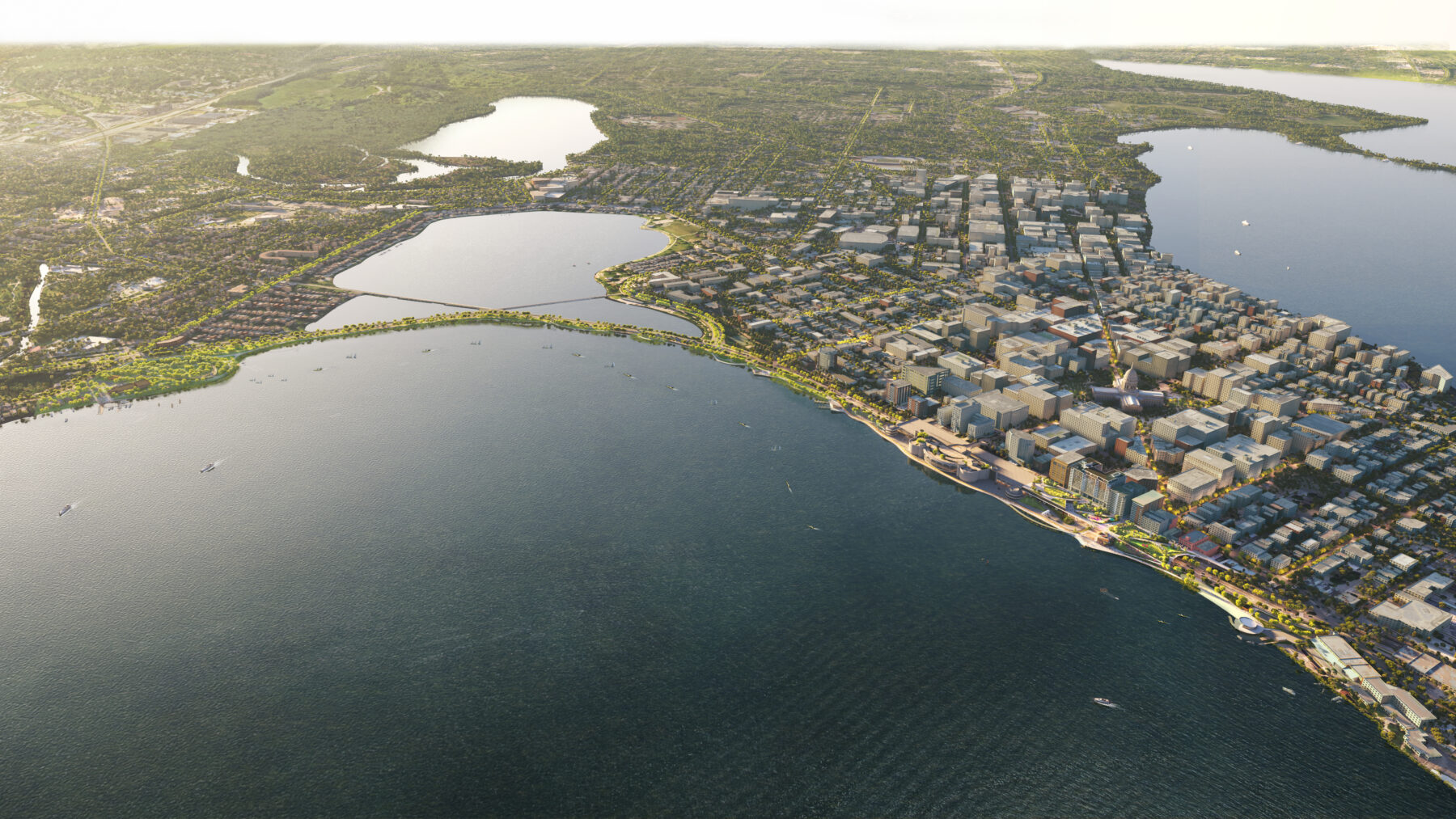
A visionary blueprint transforms 1.7 miles of shoreline in downtown Madison into an accessible and activated waterfront park
After an intensive design process and a four-month review period, Sasaki was selected by the City of Madison committee to establish an ecologically vibrant living edge along Lake Monona’s waterfront. A once-in-a-generation opportunity, the master plan is a community-endorsed vision for revitalizing the capital city’s engagement with its lake. The redevelopment will forge connections to the water, expand recreational options, improve water quality, and provide an ecologically healthy shoreline for wildlife.
Currently described as a “heavily used but bland lakefront,” the Lake Monona waterfront creates a significant grade separation between downtown Madison and the lakeshore. Vehicular traffic along John Nolen Drive makes getting there both difficult and dangerous, further isolating residents from the lake’s edge. In response, Sasaki developed a new master plan for the 37-acre linear park, which envisions an inclusive community destination for residents and visitors that will boost the downtown economy and ecology of Madison’s unique isthmus environment.
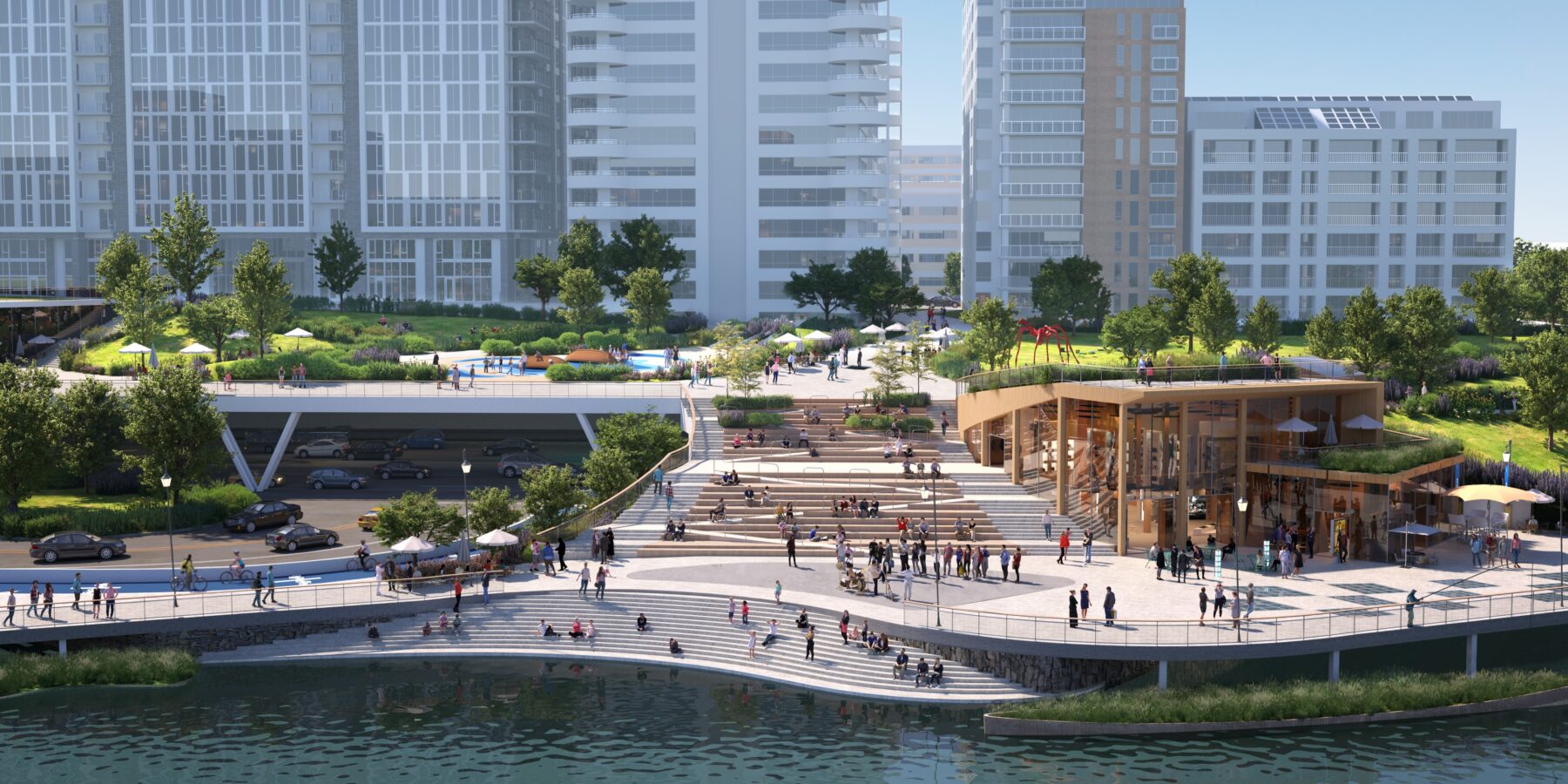
Extending the city’s park space by capping over John Nolen Drive, Law Park Ledge becomes an extension of the city, offering an accessible, inviting, and vibrant waterfront experience, unique for the Madison community
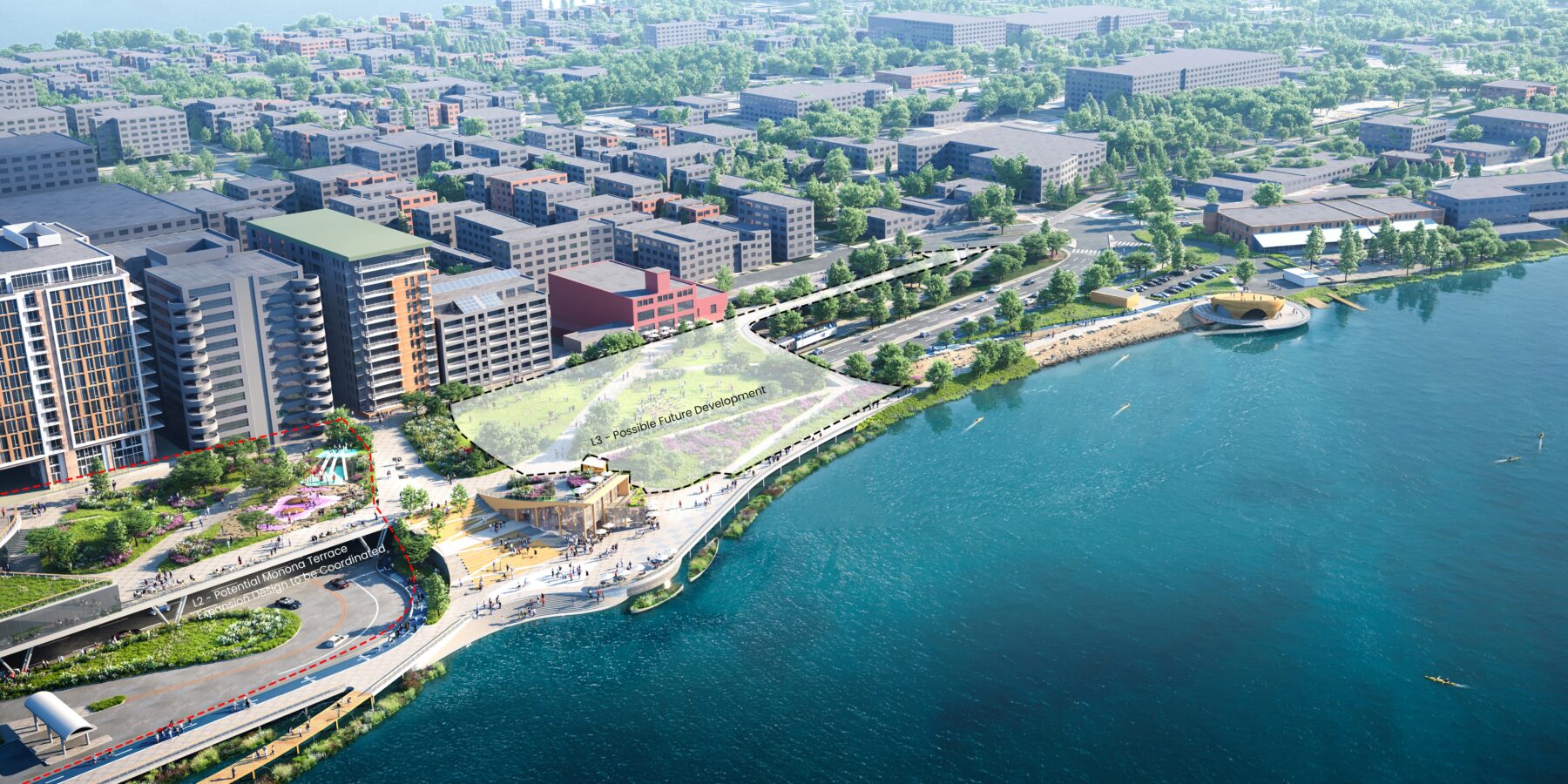
The park connects back to the city and creates new space for a playground, amphitheater, community center, concession, and boathouse. An upland beach will attract swimmers and sunbathers while providing access to the restored lake edge
Madison is a thriving capital city with a history that is inseparable from its lakes. Millennia ago, Madison’s system of five lakes was part of a single water body, Lake Yahara. This freshwater lake and the fertile land around it became home to the first human inhabitants of the area, the Ho-Chunk Nation. Along with its geography, the relationship of this isthmus-based city to the lake has evolved significantly– and the lake we all know today is largely defined by human usage, cultivating an exciting point in the story of Lake Monona.
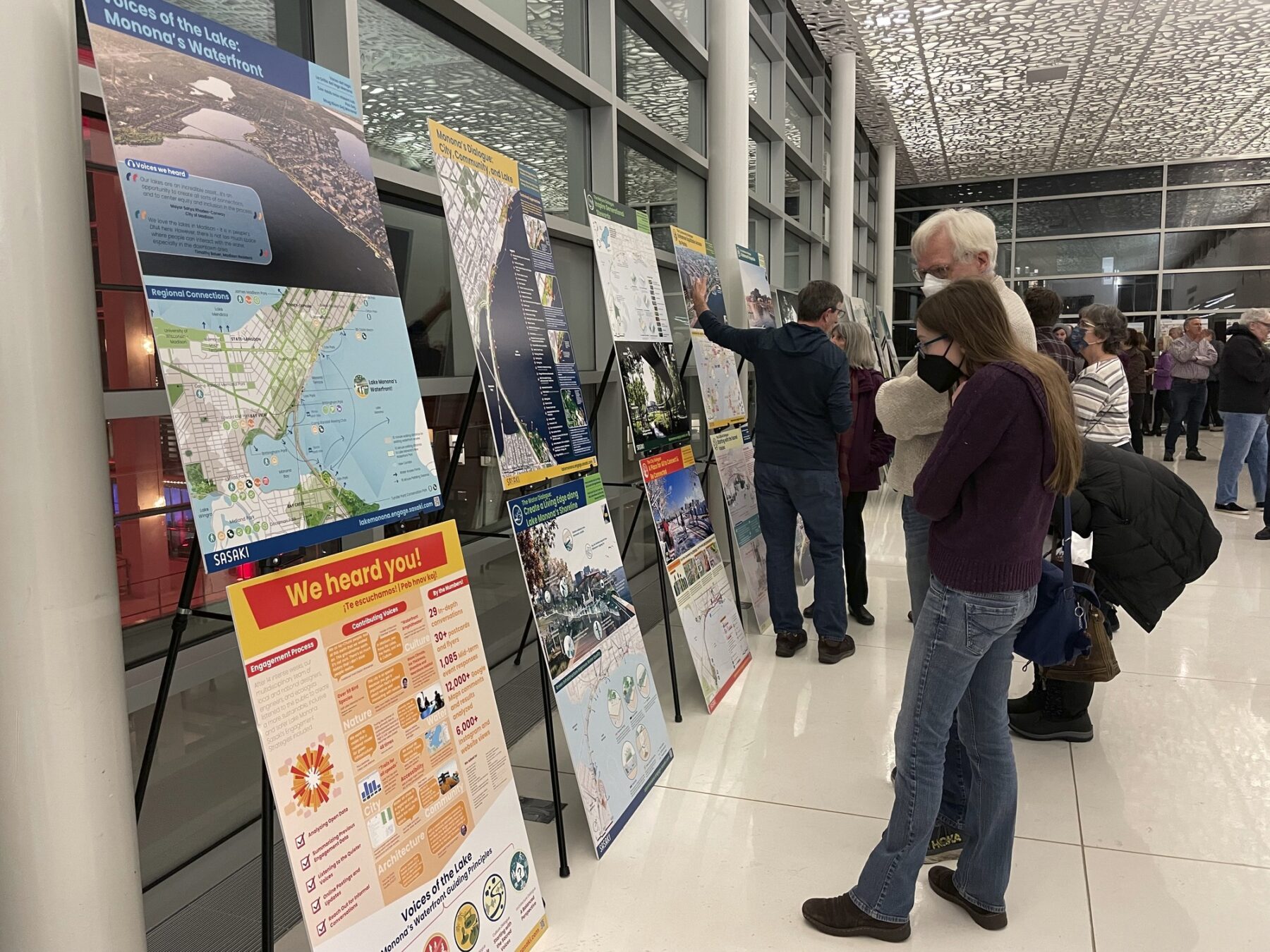
Madison Community Members review the Sasaki teams’ final Voice’s of the Lake competition submission during an open house event
The planning effort was driven by public opinion and integrated an extensive engagement process to understand and respond to the priorities of Madison’s residents and the Ho-Chunk people. During a two-month public feedback campaign, the design team benefited from passionate community interest to inform the vision for Lake Monona’s revitalized urban shoreline, resulting in 2,400 survey responses, a record-breaking result for the City of Madison.
The following six themes emerged from conversations with community members about the city’s and lake’s future and were integrated into the plan.
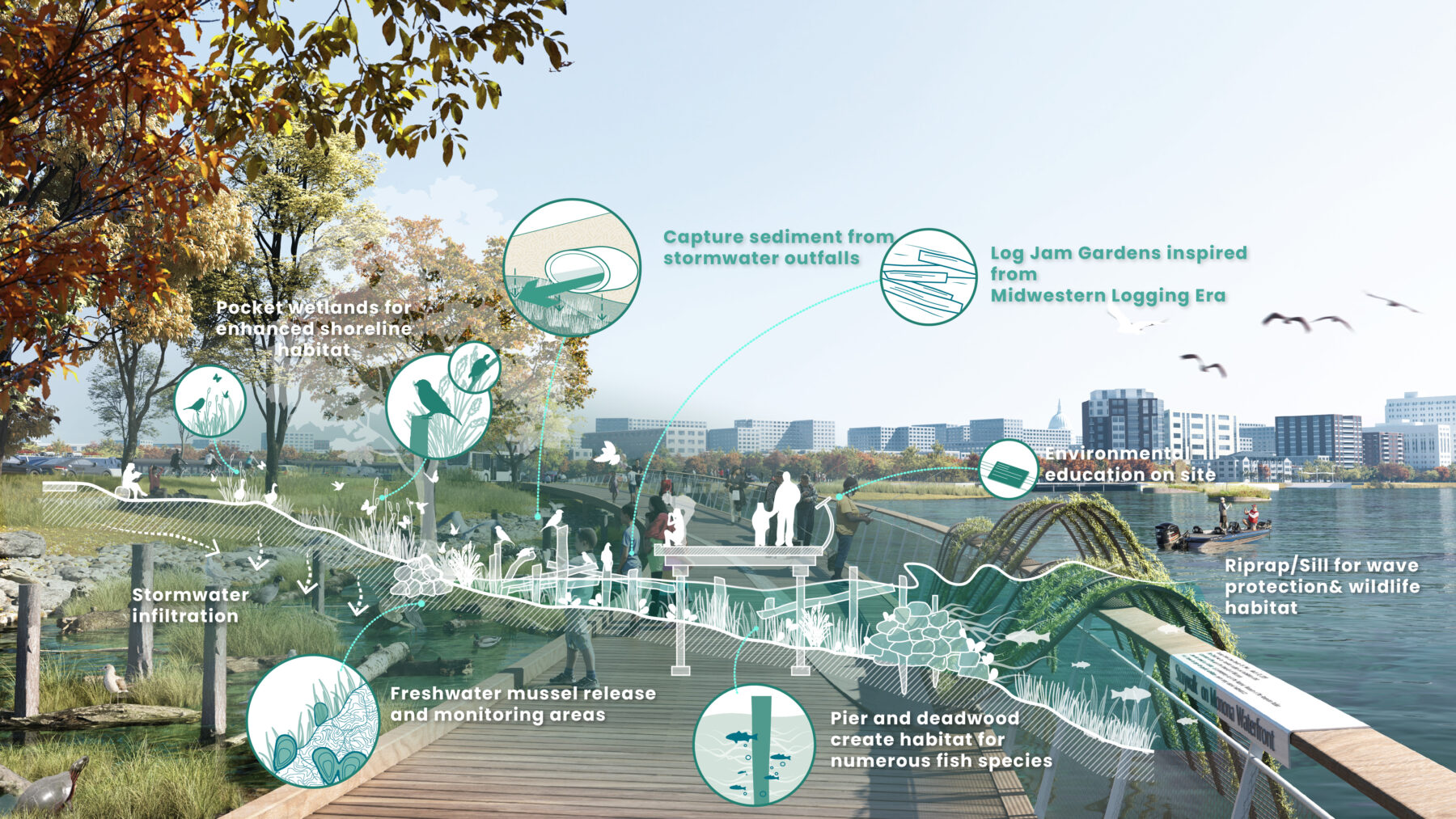
The piers and Log Jam Gardens provide a protected environment for numerous fish species along with opportunities for environmental education
The design prioritizes the establishment of an ecologically vibrant living edge along the waterfront. This living edge framework is an ecological restoration strategy that will protect and provide habitat for amphibious life in the region. Pocket wetlands will enhance the shoreline for birds, while designated areas are proposed for freshwater mussel release and monitoring. The piers and Log Jam Gardens provide a protected environment for numerous fish species along with opportunities for environmental education. Green infrastructure throughout the park such as rain gardens and wetlands will capture and clean stormwater before it enters Lake Monona.
Once the lake’s edge has been established, pedestrian infrastructure will be introduced to facilitate a stronger connection to the core of Madison’s downtown and south neighborhoods. Improved intersections, widened walking paths, and separated bike lanes will create a new waterfront that is accessible for all people at all times.
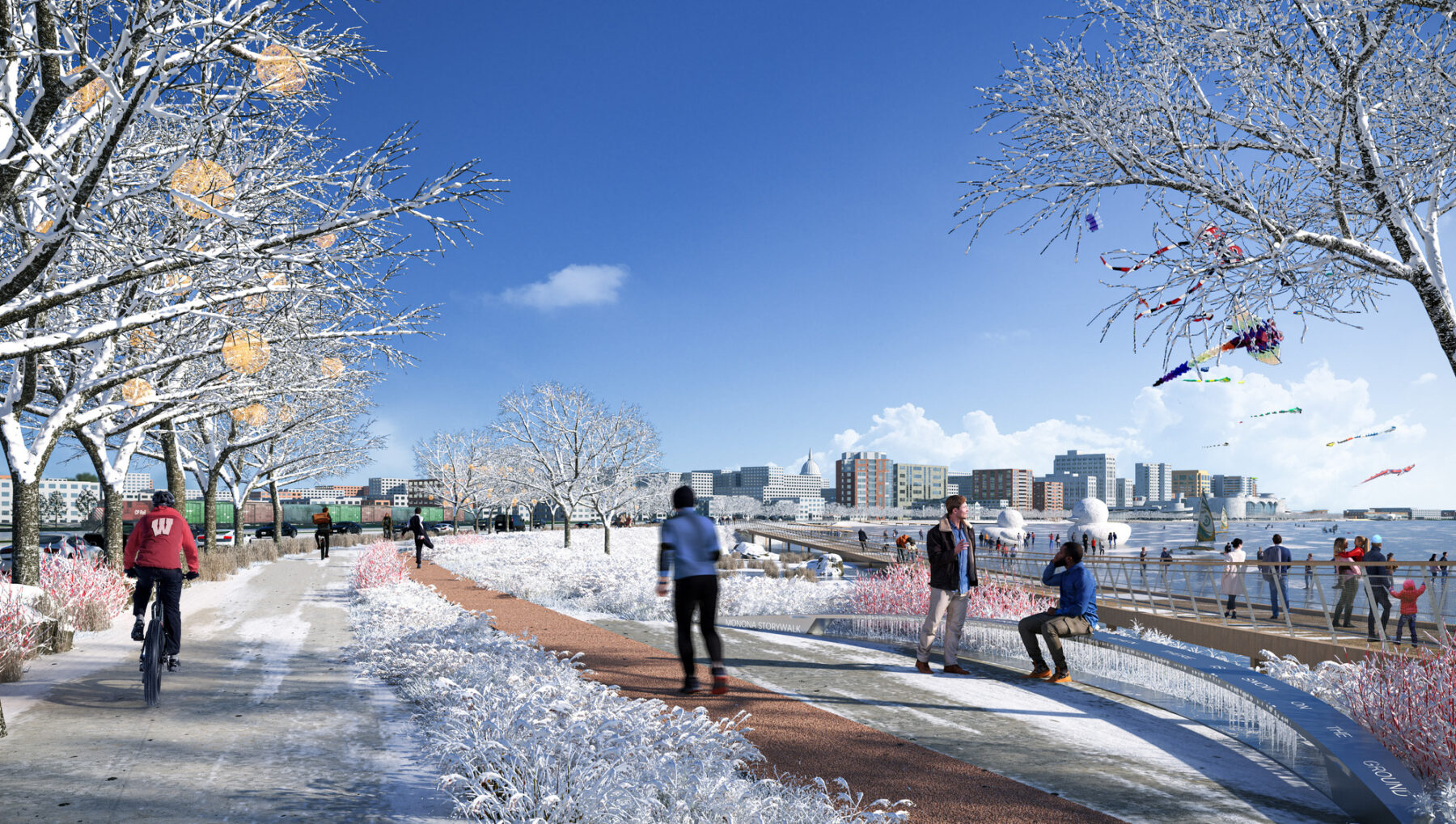
The Community Causeway will improve safety by reducing traffic speeds and improving bike and pedestrian crossings via multi-use trails designed for users of all ages and speeds
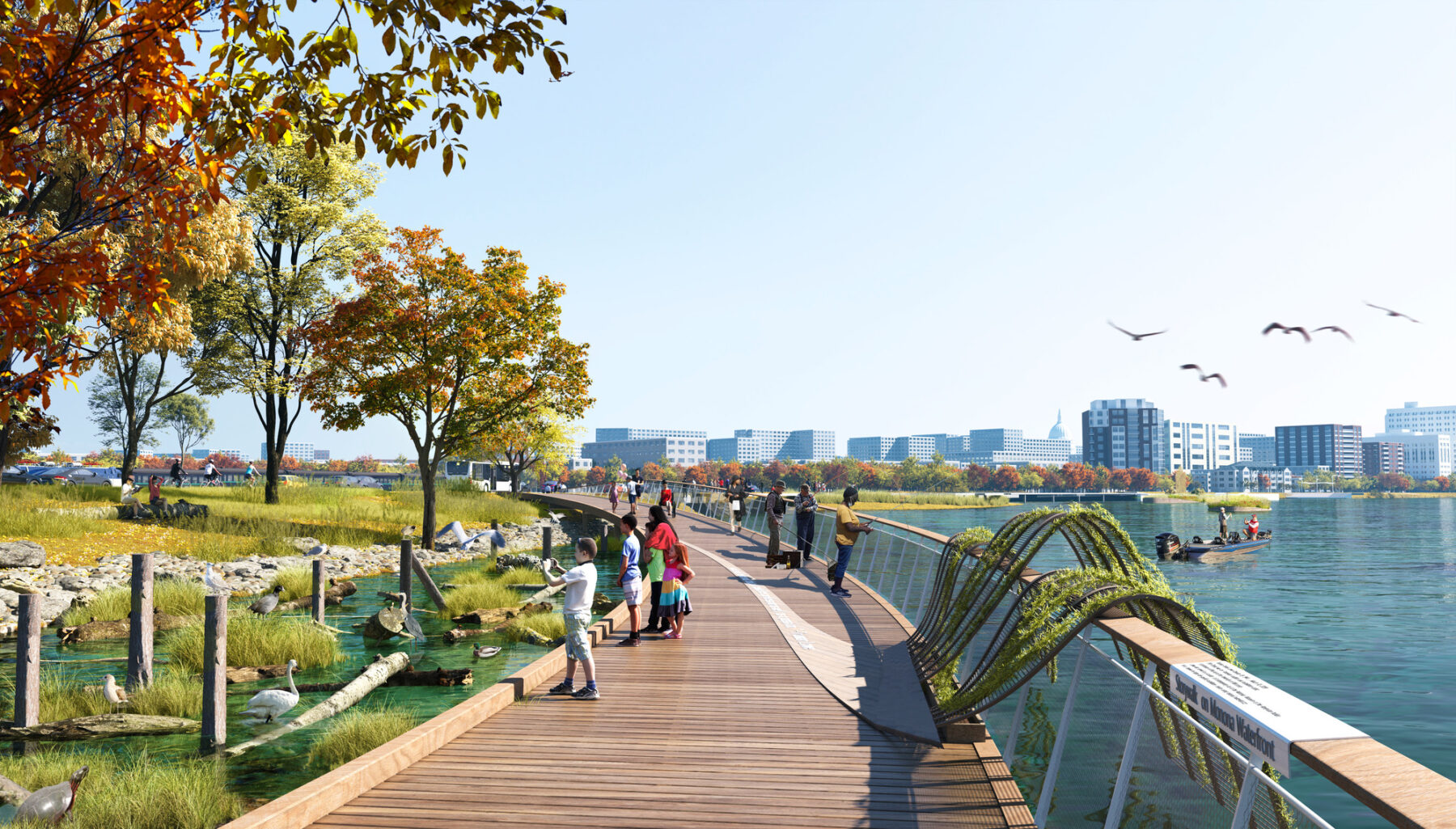
Pile-protected fringe wetlands enhance the shoreline, offering stormwater education, while visitors enjoy views of Lake Monona and the Capitol from the Capitol Overlook area
“Our lakes are an incredible asset... it’s an opportunity to create all sorts of connections, and to center equity and inclusion in the process.”
Mayor Satya Rhodes-Conway, City of Madison
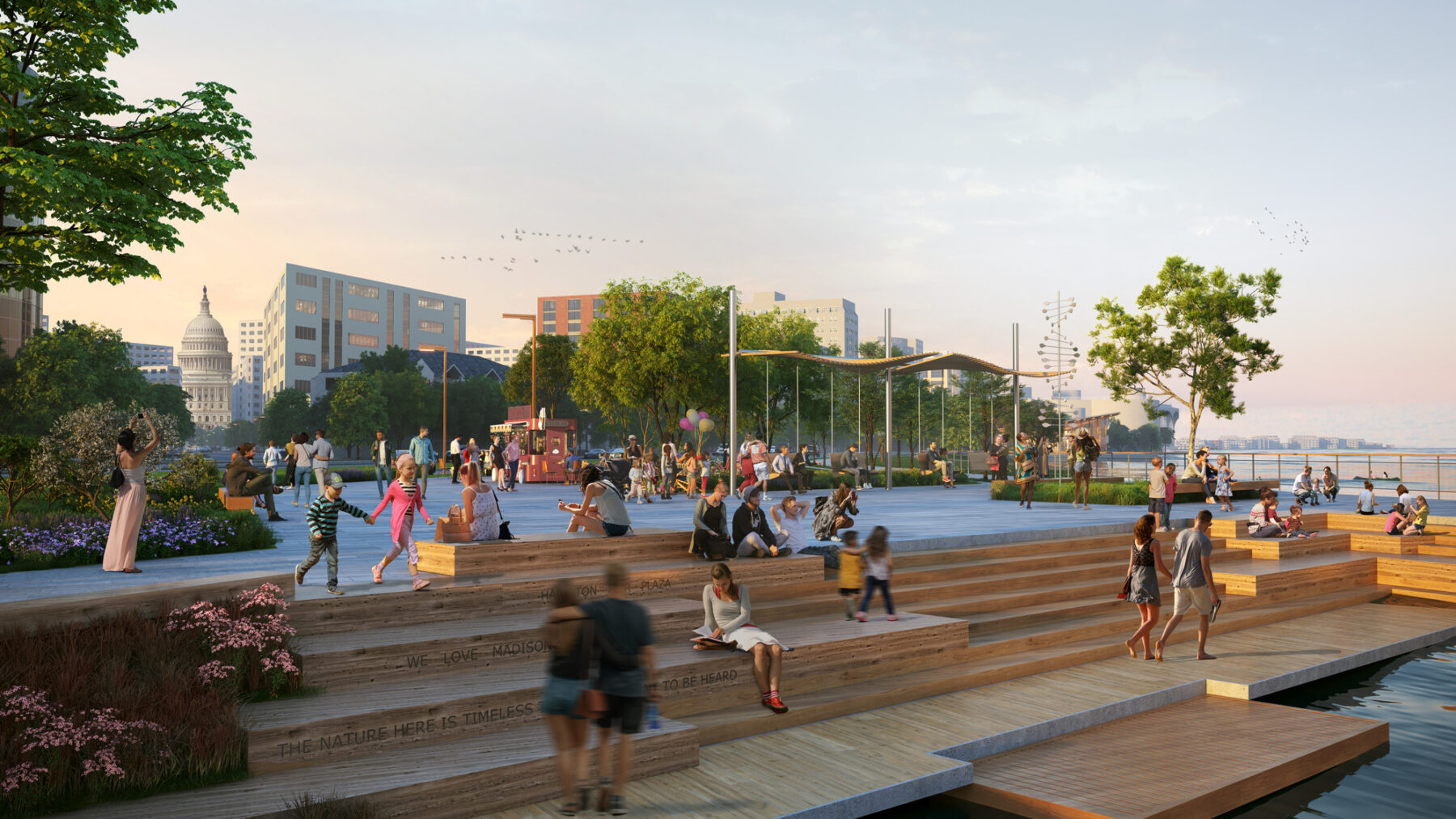
The Lake Lounge completes the axial connection to the Wisconsin State Capitol, with public arts at the iconic Hamilton Pier Plaza while showcasing the lake with areas for gatherings, fishing, and food trucks
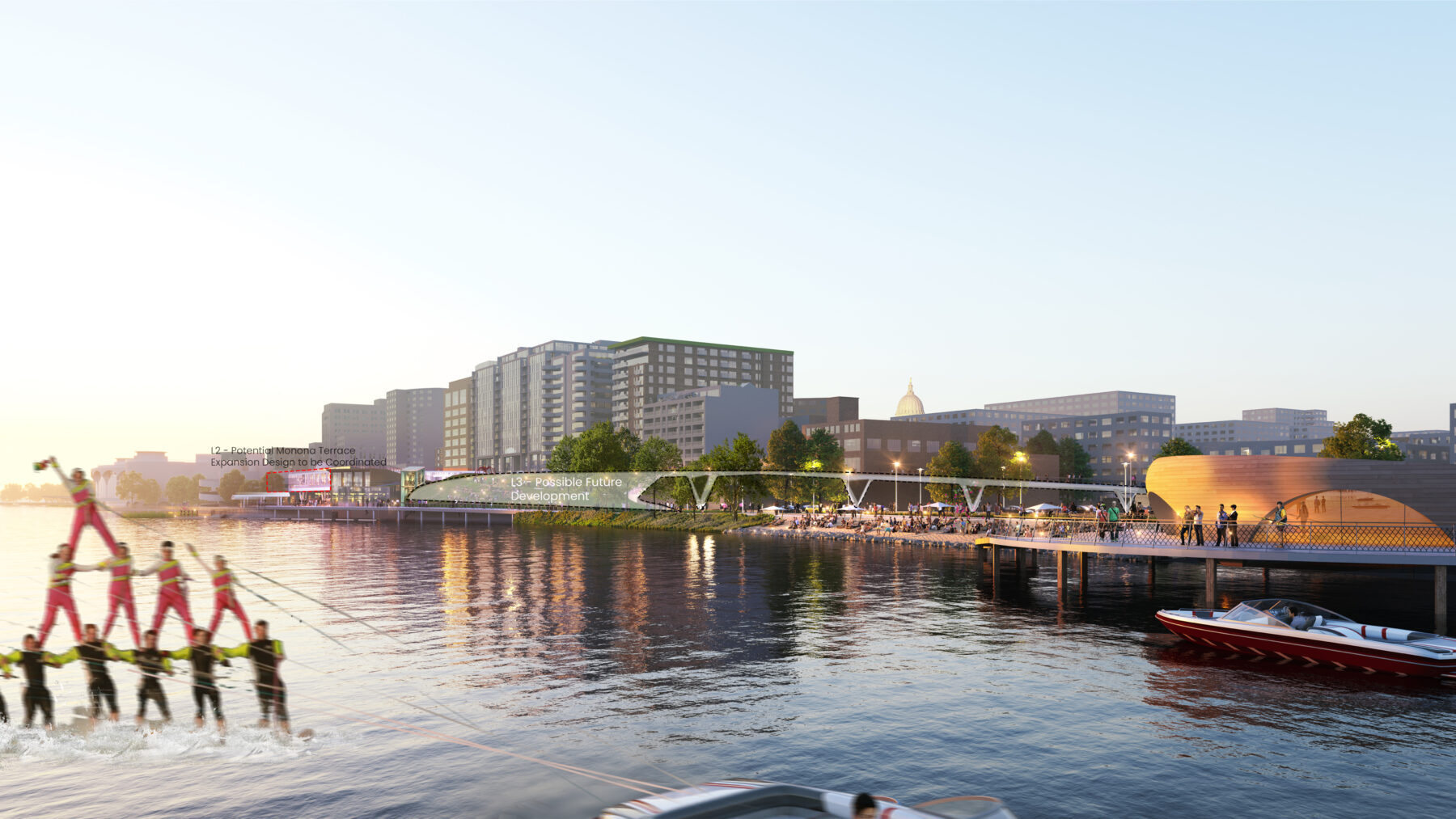
Law Park Ledge allows for large gatherings along the Lake’s shoreline, accommodating a range of programs including the local Mad City Ski Team’s performances
The 1.7-mile long plan will be divided into four distinct zones and potential phases. Law Park Ledge will include a new park over the John Nolen Drive featuring an outdoor amphitheater, a community boat house, and a concession along the restored lake edge. The Lake Lounge area showcases the living edge and offers areas for food trucks as well as direct connection back to the Capitol. The Community Causeway grants cyclists, walkers, and runners safe access along the lake while leveraging green infrastructure to clean stormwater runoff from the adjacent causeway. Finally, Olin Overlook hosts a green space that offers reprieve from everyday life, where a nature center will provide opportunities to learn about the successional forest within the park and offer incredible views back to the city.
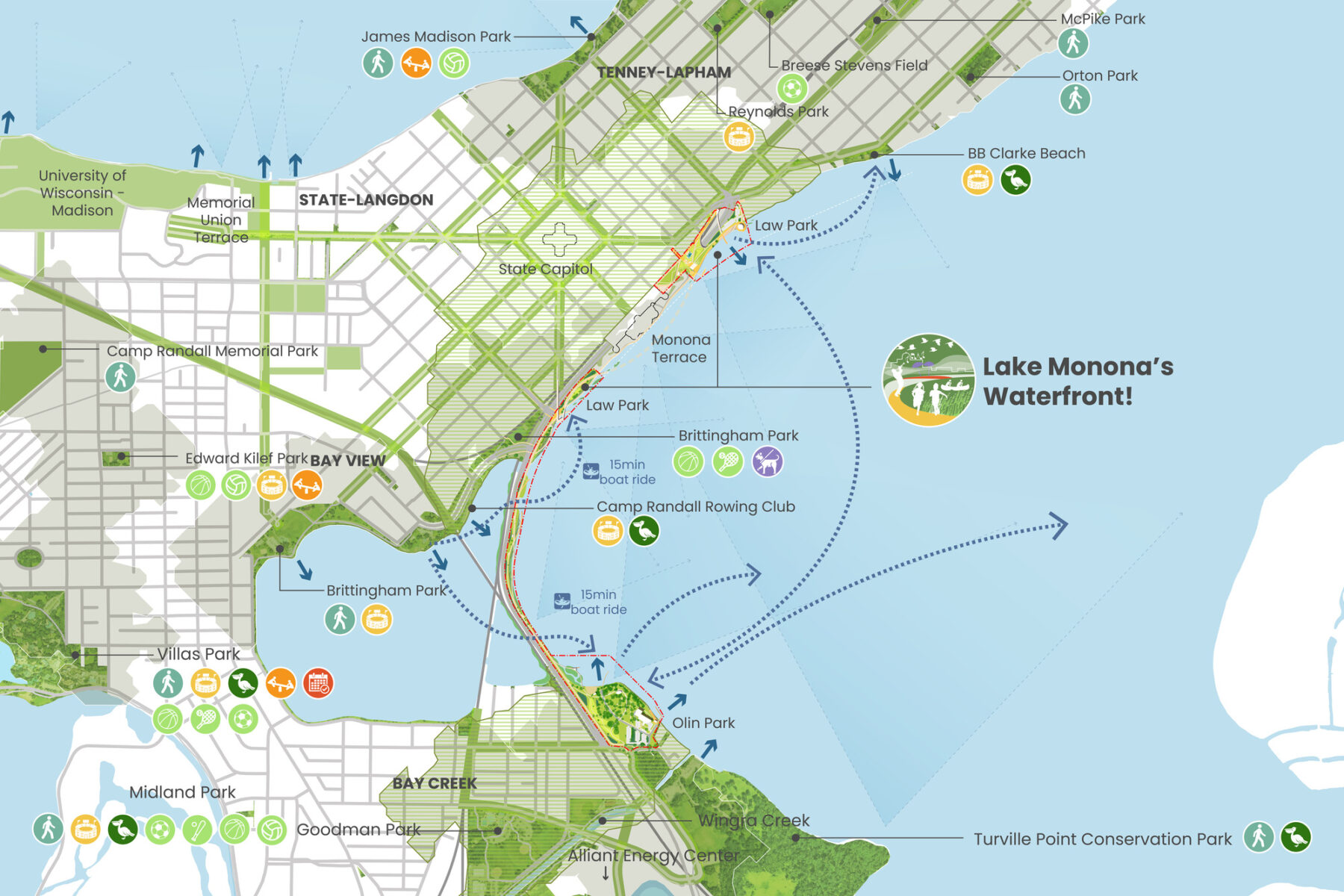
The new Lake Monona Waterfront aims to bridge the gap between accessible green space that is a walkable distance from downtown Madison, as well as to provide a variety of programmatic opportunities
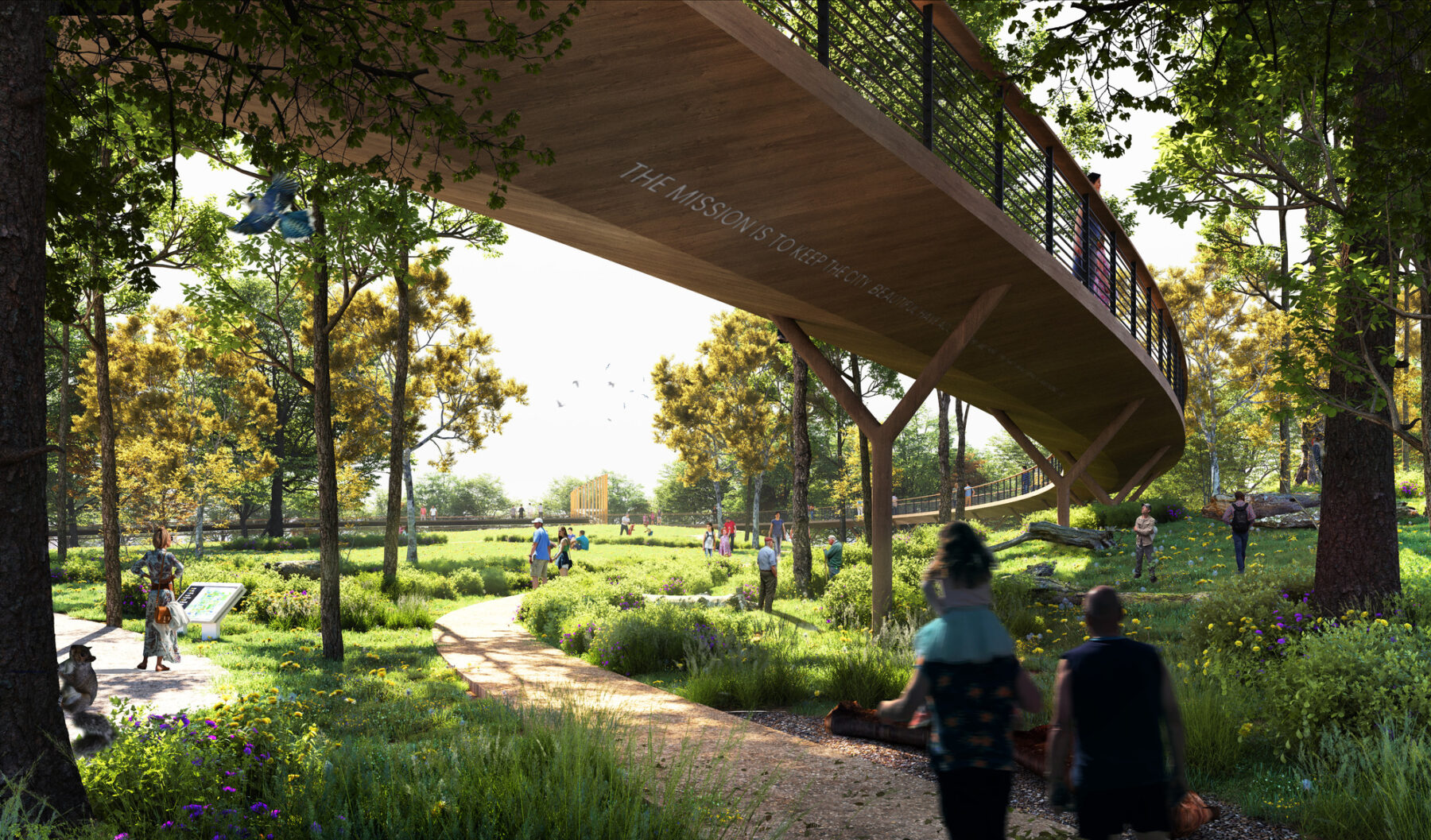
Olin Overlook creates a green oasis supported by a canopy walk and nature center
The entire linear park is woven together by the Story Walk, a wayfinding element and physical representation of the guiding principles and unique community dialogues sought throughout the design process. This unifying ribbon links park districts, morphing and shifting in scale across the 37-acre site. It gracefully manifests as graphics on a sidewalk, or as ephemeral carvings in ice, or even as quotes on a wall that connect the past, present, and future of the Monona waterfront.
“This is not our land, this is grandmother earth.”
Traditional Chief Clayton Winneshiek, at Ho-Chunk Ceremony of Blessing and Releasing the Land, UW Lakeshore Preserve Outreach Center
The Story Walk is a device to uplift the voices of the lake—from the Indigenous and sacred, to the ecological, historical, and cultural. The team engaged Ho-Chunk Nation leaders to listen, interpret, and amplify their stories, and to understand what is sacred to their people.
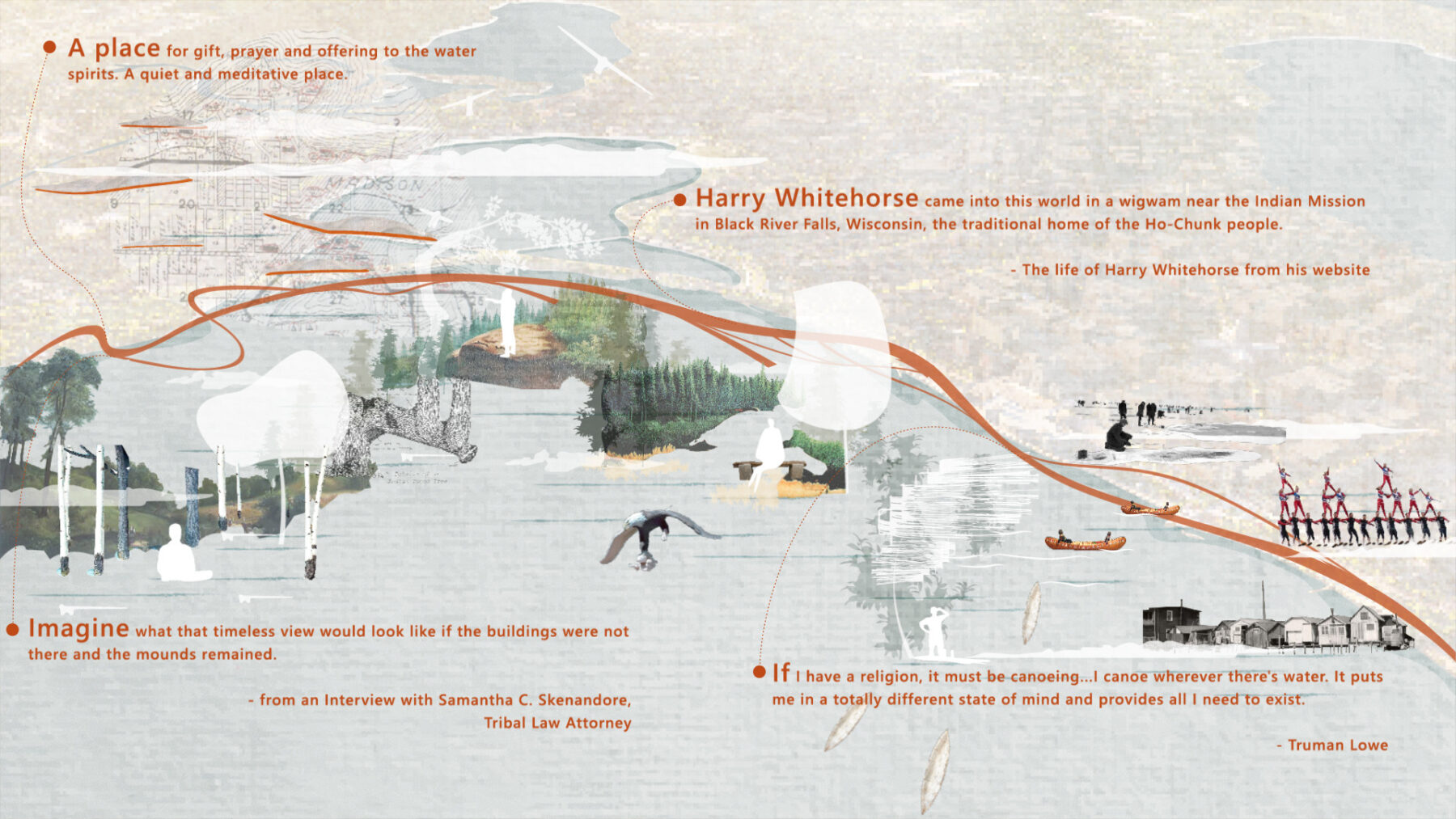
The Story Walk amplifies the diverse voices of Madison along Lake Monona’s waterfront. It is conceived as a ribbon that morphs from a graphic on a sidewalk to ephemeral carvings in ice to quotes on a wall.
A multidisciplinary team of local and national landscape architects, architects, engineers, and ecologists collaborated closely with the community to create this ambitious yet actionable master plan for Madison’s waterfront. Through on-site visits, extensive community conversations, analysis of community feedback, and technical due diligence, the landscape architect-led team has created a vision for a captivating shoreline that contributes to the ecological and economic health of Madison, and amplifies the diverse voices of this city by its lake.
For more information contact Anna Cawrse.
Sasaki’s winning design will create an accessible, activated waterfront and establish a protected shoreline for wildlife to flourish
Sasaki designers reveal their proposal for the Lake Monona Waterfront Design Challenge in Madison, WI